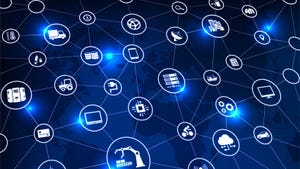Continuous Innovation Will Fuel The Next Waves of Digital and Intelligent Transformation
July 6, 2023

Sponsored Content
If the first wave of 5G-enabled digital transformation was all about connectivity, then the next wave – called 5.5G by Huawei and other major industry players – will be about digital and intelligent transformation. The result? Unprecedented network speeds and performance that powers the next – and more intelligent, thanks to AI – era in digital transformation across industries.
Richard Liu, Huawei’s President of Global Carrier Marketing & Solution Sales, recently unpacked what that specifically means during a media event at MWC 2023 in Shanghai.

The first few years of commercial 5G were largely focused on the shift to Gbps downlink speeds and 100Mbps uplink, as well as cloud-native transformation across various industries and telco operators themselves.
The next phase: Gbps uplink and 10Gbps downlink, paired with native AI and a greater focus and capability on digital transformation. That means telco carriers will play an even greater role in the digitalization around the globe and across virtually every industry.
“Currently, the digital economy is a key driver of growth in major economies around the world,” Liu said. “It is becoming a key force in restructuring global resource elements, reshaping global economic structure, and changing global industry competition.”
According to Huawei’s Smart Economy research report, approximately 55% of all economic growth will be driven by the digital economy by 2025, with the global scale of the digital economy reaching US$23.6 trillion.
This represents a massive opportunity for telecom carriers, both in the consumer and business segments.
“Carriers have always been the leaders and enablers of digital transformation,” Liu said. “Operators have not only continuously optimized and accumulated their own innovation capabilities during digital transformation, but also enabled digital upgrade of thousands of industries, which has accumulated huge innovation potential.
Indeed, previous investments by carriers – and partners like Huawei – in digital transformation, both their own as well as that of their customers, have laid a foundation for massive innovation going forward.
Liu outlined three ways in which industry players like Huawei and the carriers they partner with can collaborate to unlock that potential with a new era of continuous innovation.
1. The infrastructure layer. Liu described the importance here of transforming ICT collaboration into the ability to flexibly integrate strategic resources: “It should be said that only by breaking through the critical capabilities of connection can we have the right to choose the future. Powerful connectivity capabilities, such as 5G, IPv6, and all-optical, are new advantages for carriers’ digital transformation.”
2. The operational layer. Liu stressed the importance of turning massive amounts of data into the capability of agilely handling complex scenarios: “From data aggregation to data aggregation + intelligence, data can play a greater value in carriers’ operations.”
3. The digital service layer. Because of its early mover advantage in digital transformation, the telecom industry is well positioned to turn its core services into what amounts to an innovation lab that continuously produces new services that drive the digital economy: “Carriers can continuously innovate and provide more and more innovative digital services based on core advantageous services. This enables carriers to focus on both government and enterprise and emerging customers, instead of [only] consumers and home users.”
Underpinning each of these layers is the need for continued collaboration and a closer integration of AI and other cognitive technologies with traditional communication services. No industry is better positioned to do so.
”In the future, a new wave of digital intelligence is coming,” Liu said. “Huawei will continue to work with the industry to promote digital intelligence transformation and accelerate the transformation of innovation potential into the driving force of industry development.”
About the Author(s)
You May Also Like











_1.jpg?width=300&auto=webp&quality=80&disable=upscale)


.png?width=800&auto=webp&quality=80&disable=upscale)